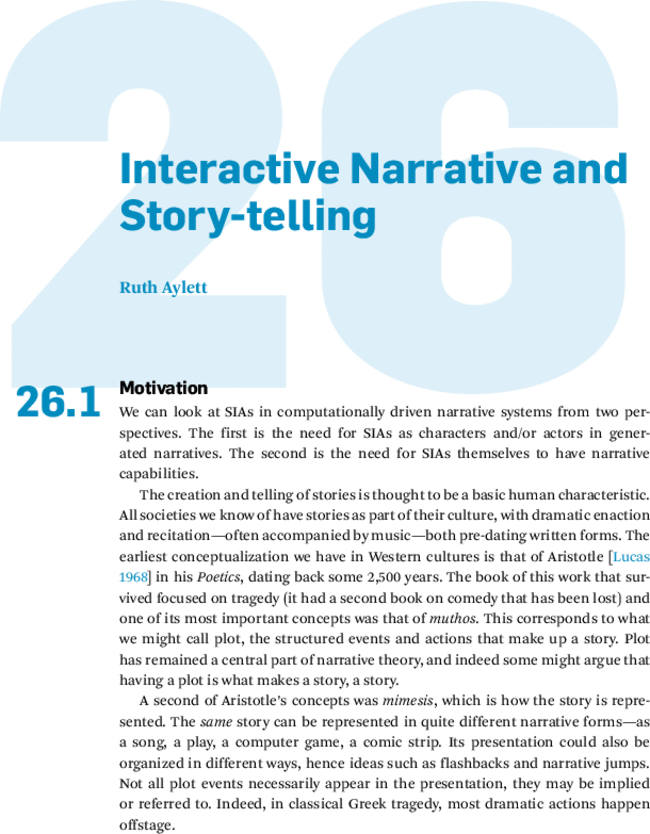Cited By
View all- Steinhaeusser SZehe ASchnetter PHotho ALugrin B(2024)Towards the development of an automated robotic storyteller: comparing approaches for emotional story annotation for non-verbal expression via body languageJournal on Multimodal User Interfaces10.1007/s12193-024-00429-wOnline publication date: 4-Apr-2024
- Gebhard PTsovaltzi DSchneeberger TNunnari F(2022)Serious Games with SIAsThe Handbook on Socially Interactive Agents10.1145/3563659.3563676(527-546)Online publication date: 27-Oct-2022
- Prada RRato D(2022)Socially Interactive Agents in GamesThe Handbook on Socially Interactive Agents10.1145/3563659.3563675(493-526)Online publication date: 27-Oct-2022
- Show More Cited By




